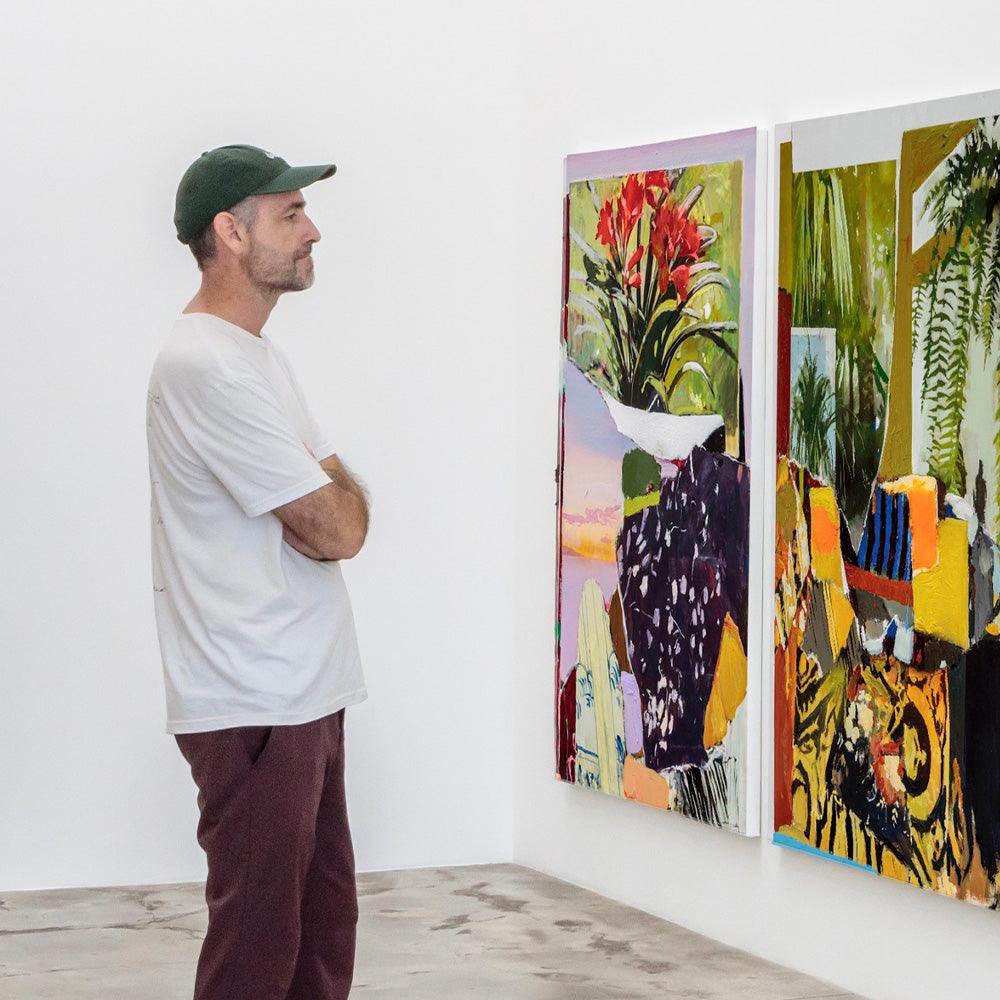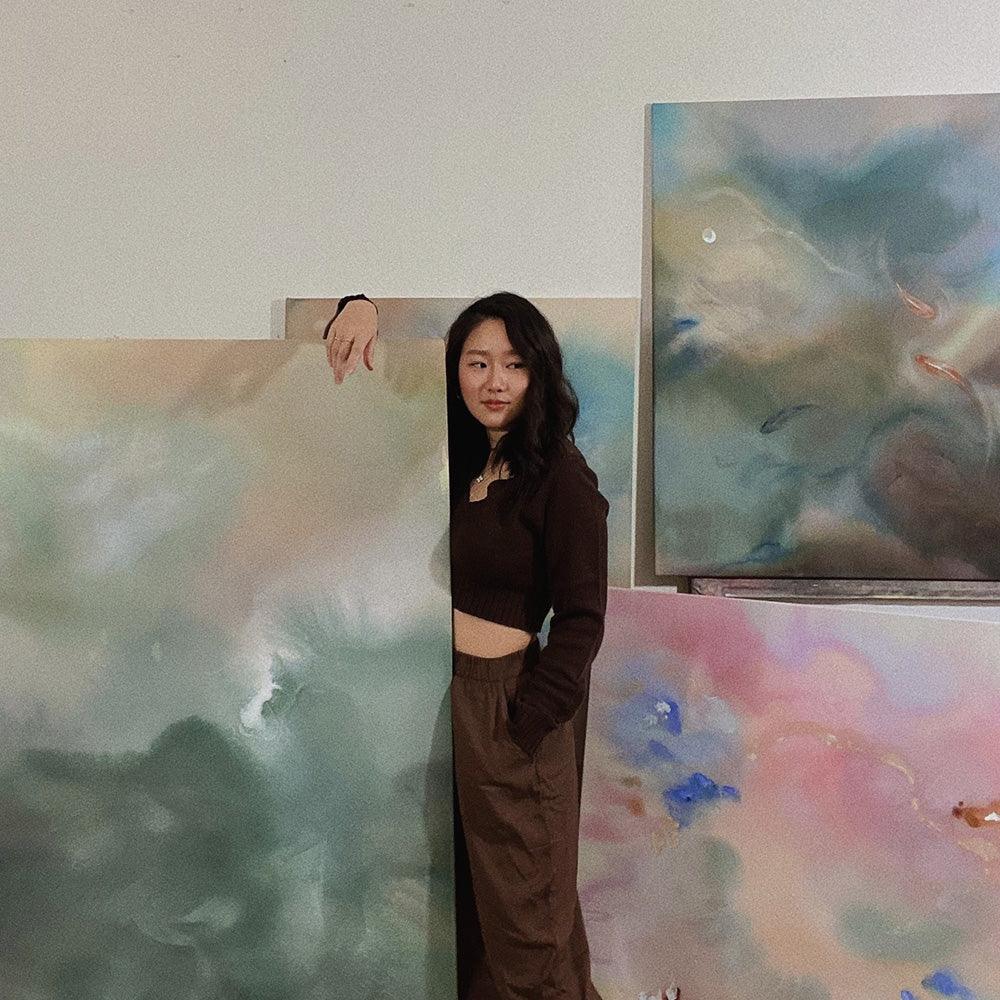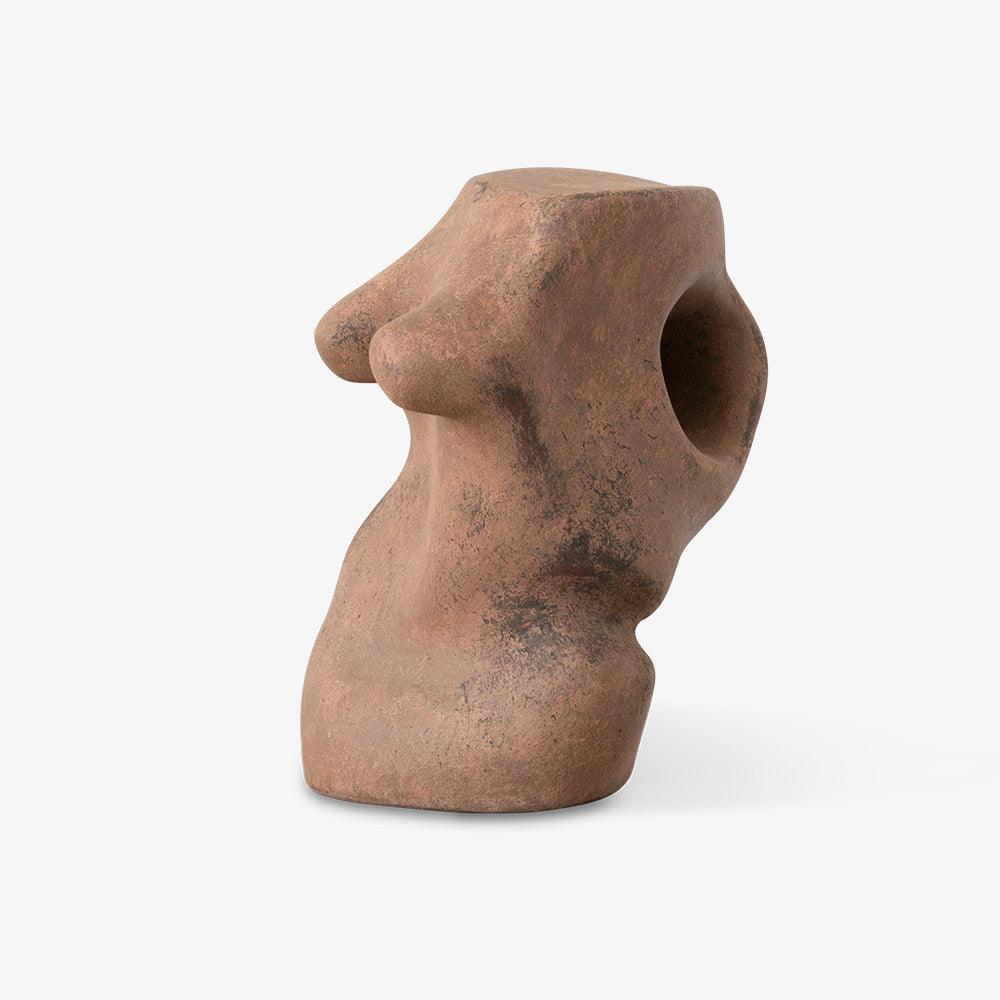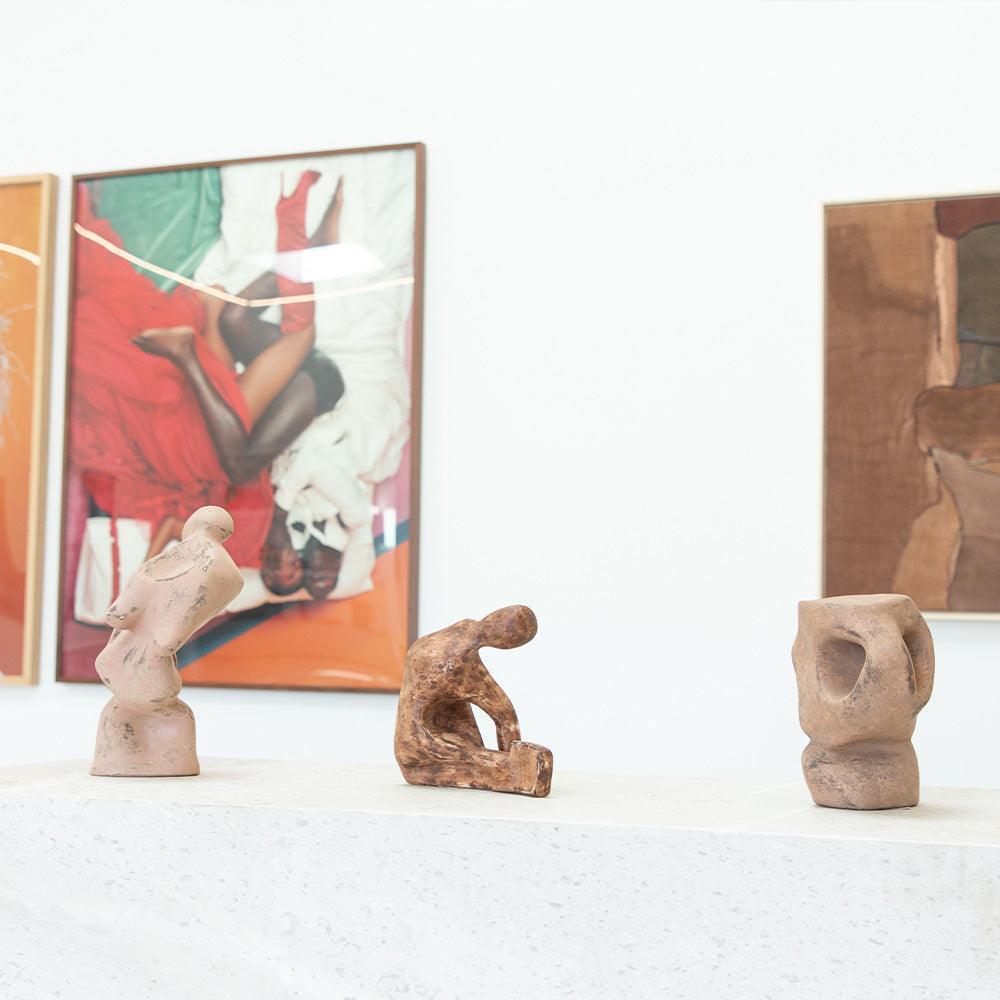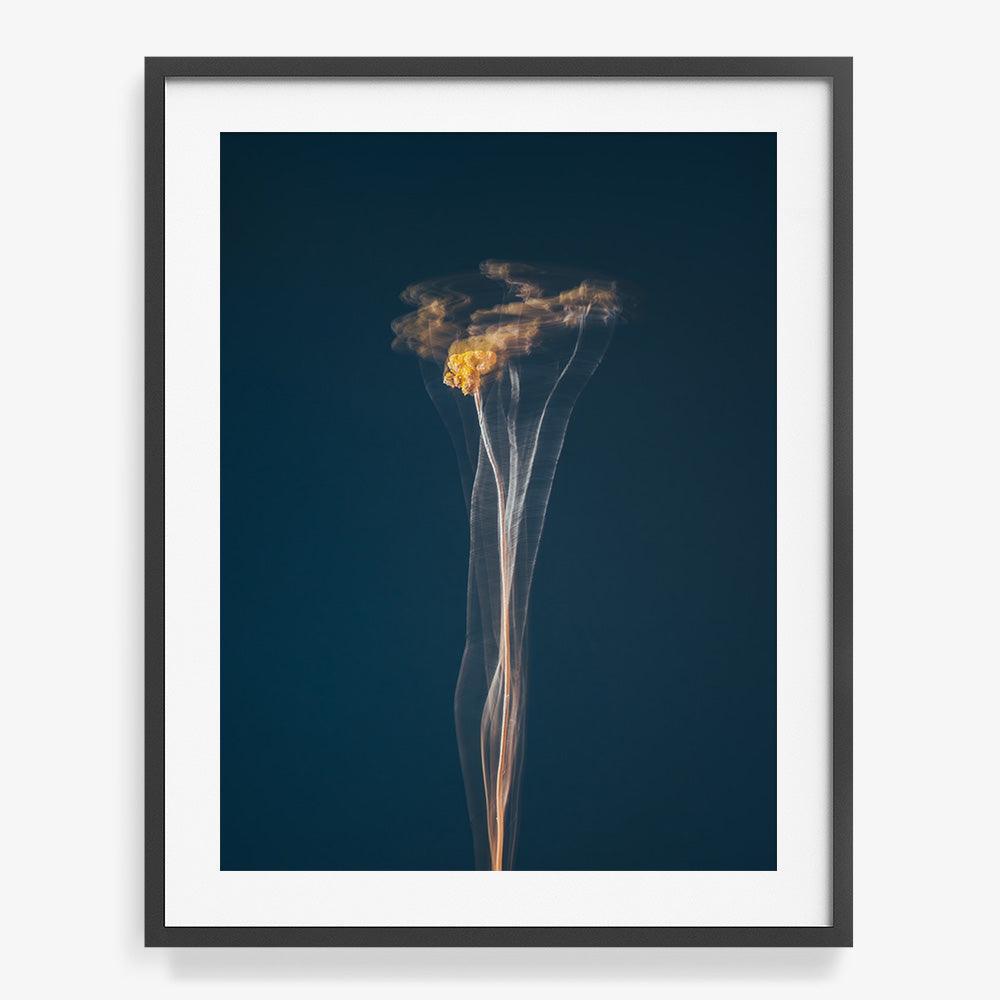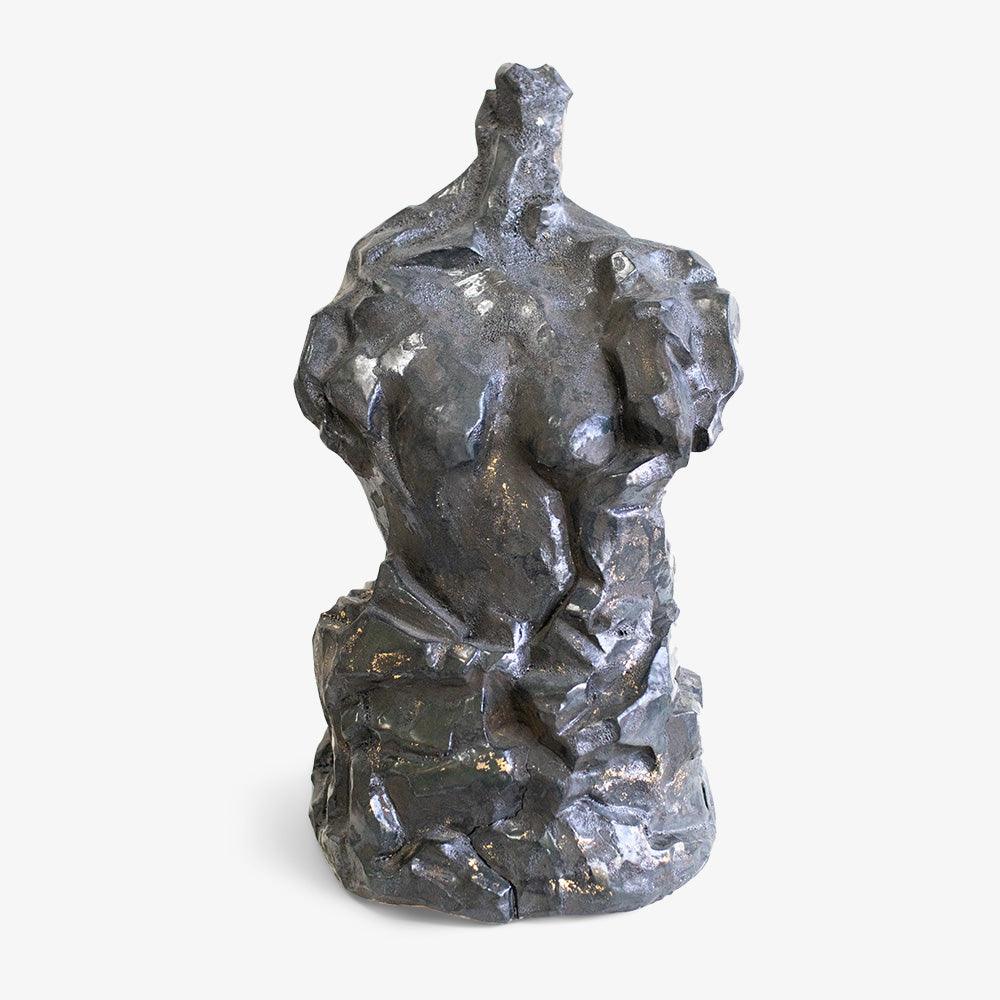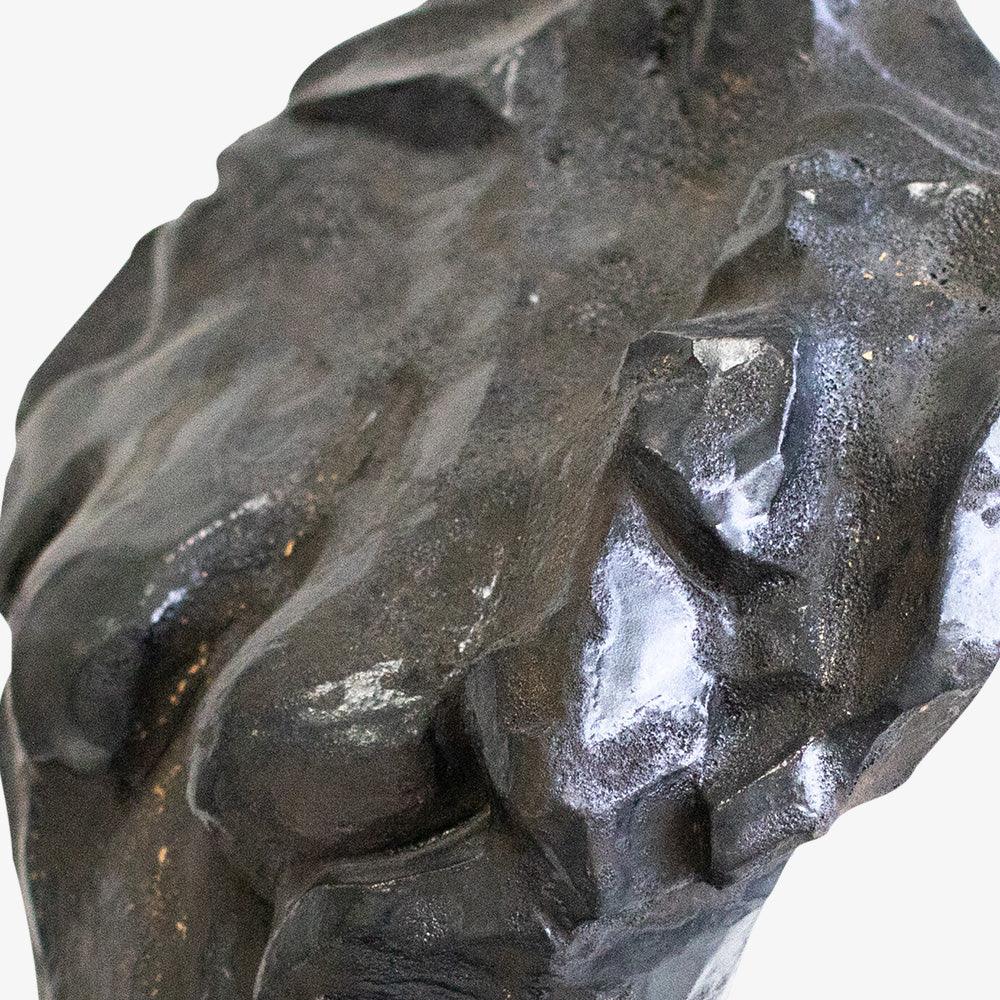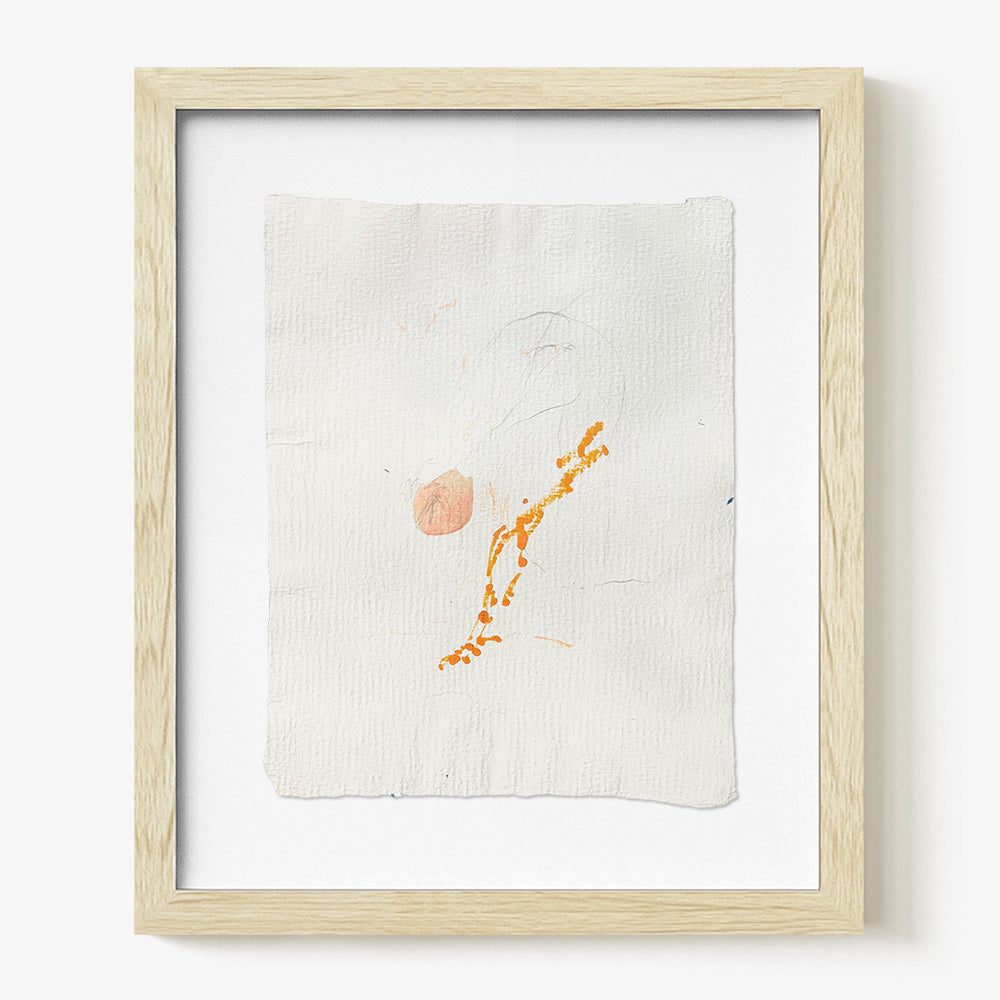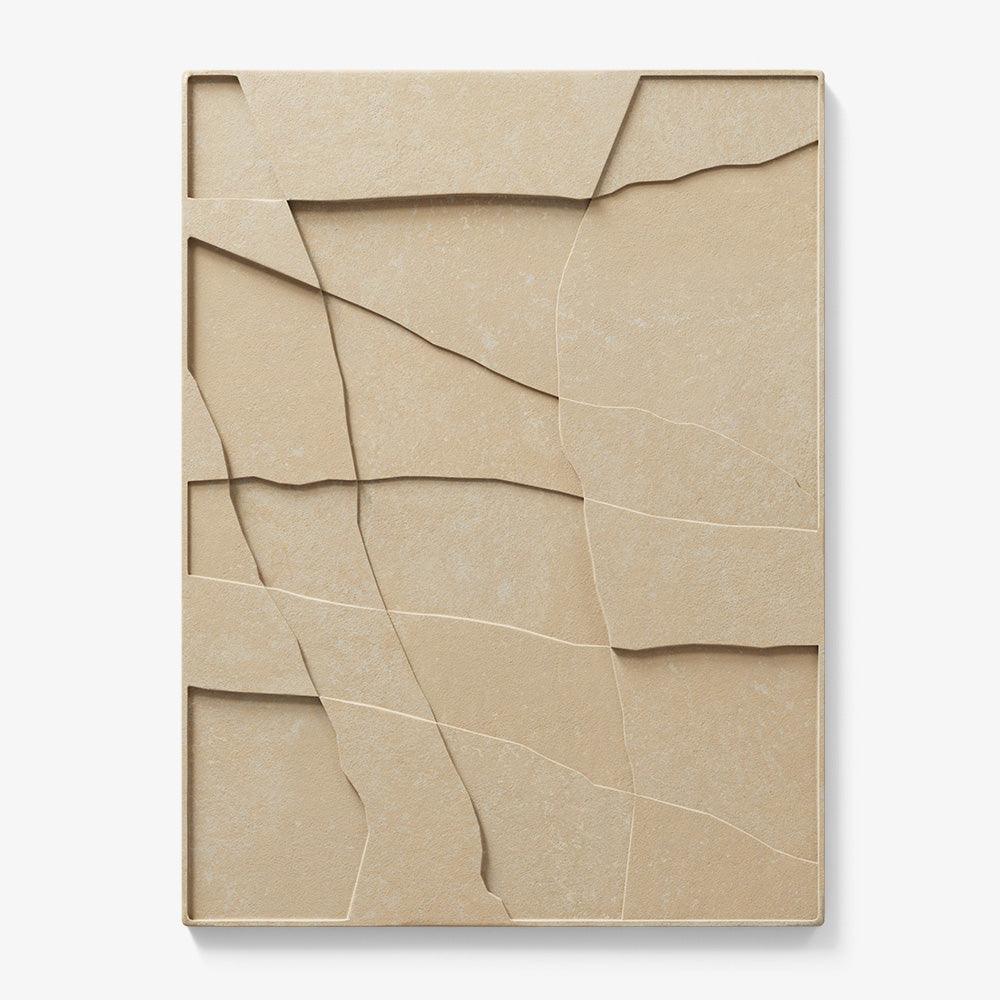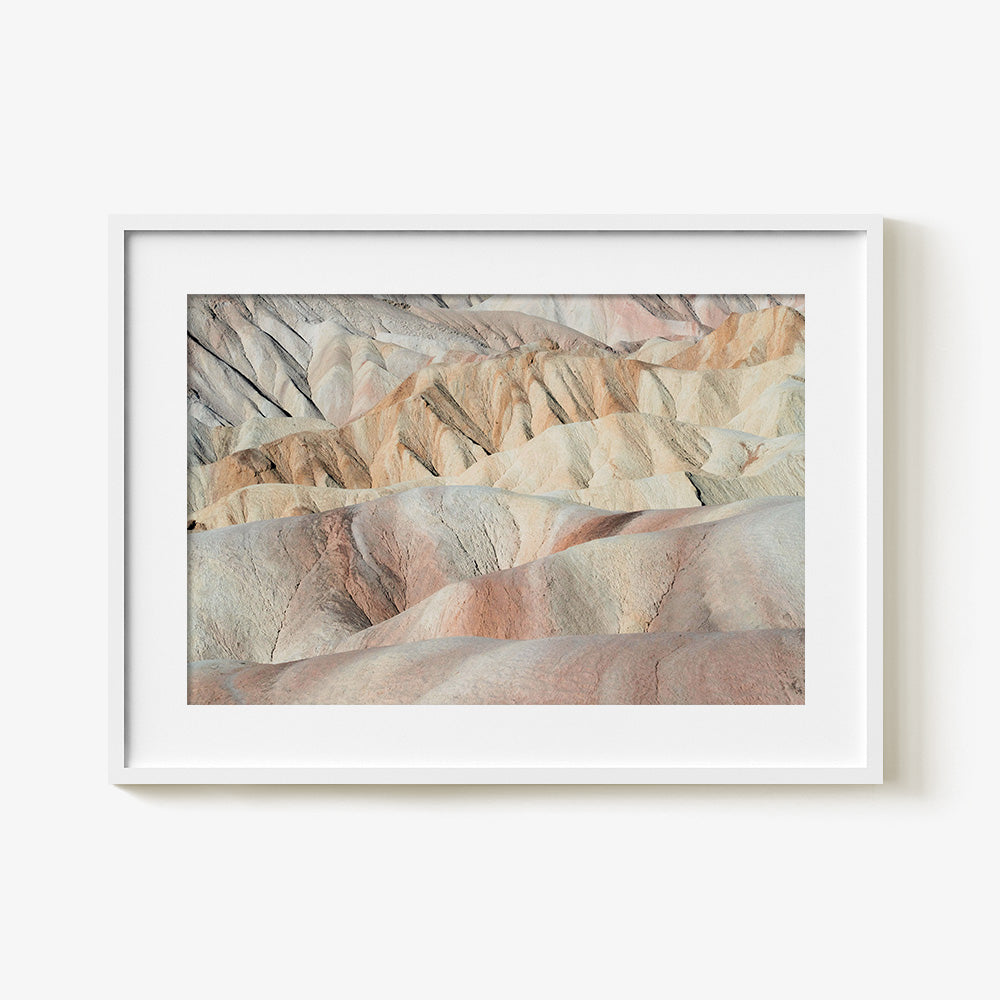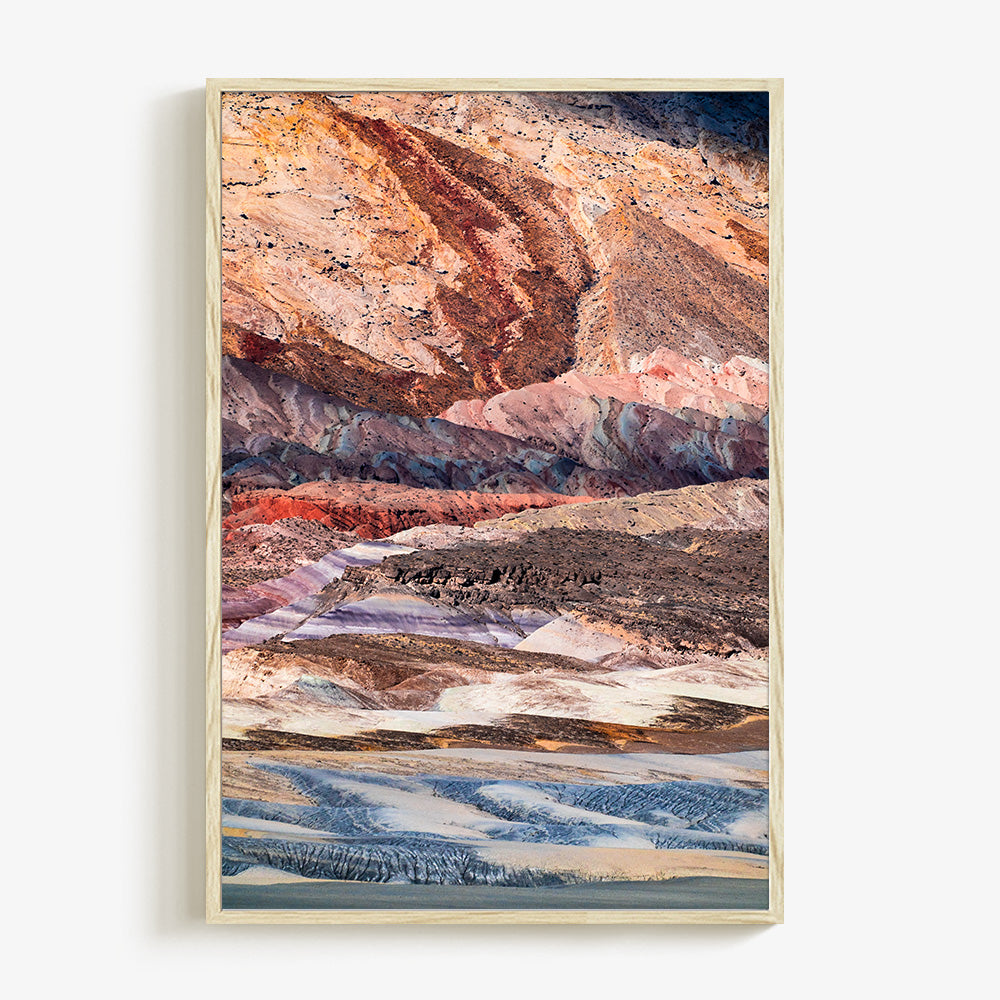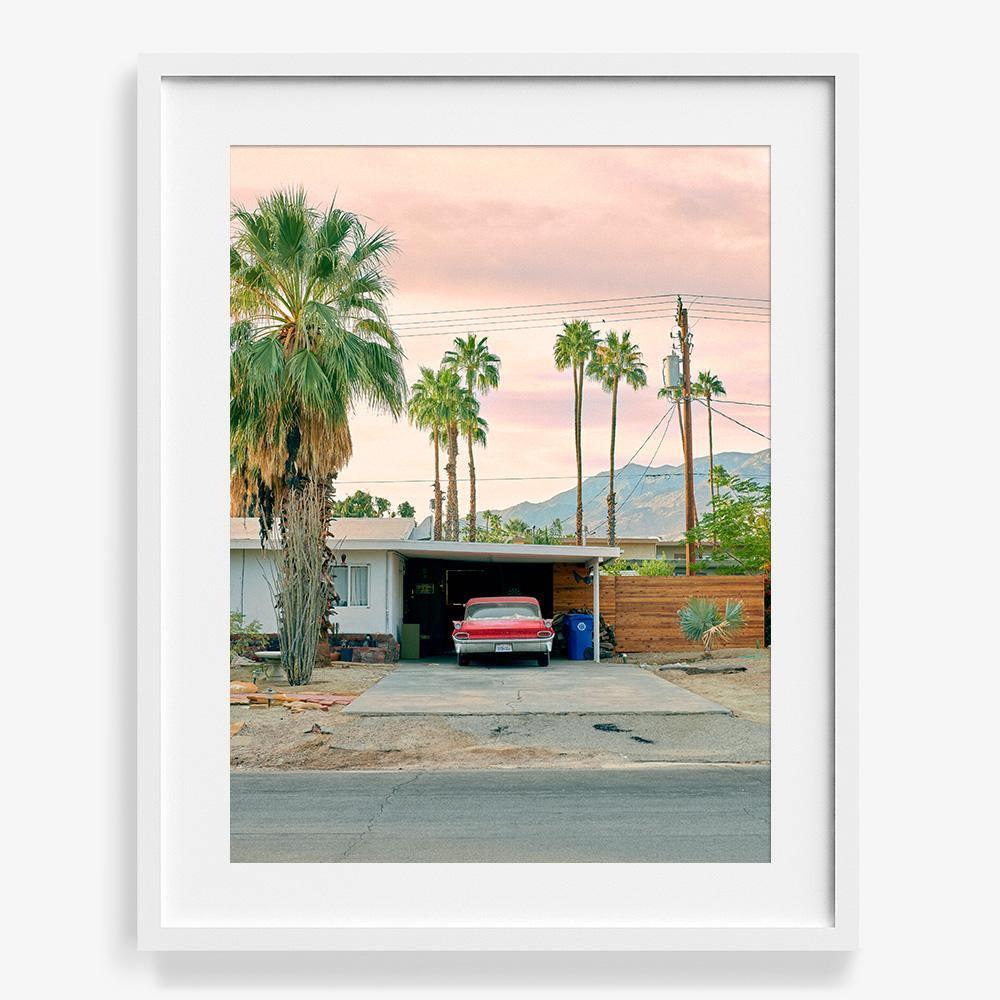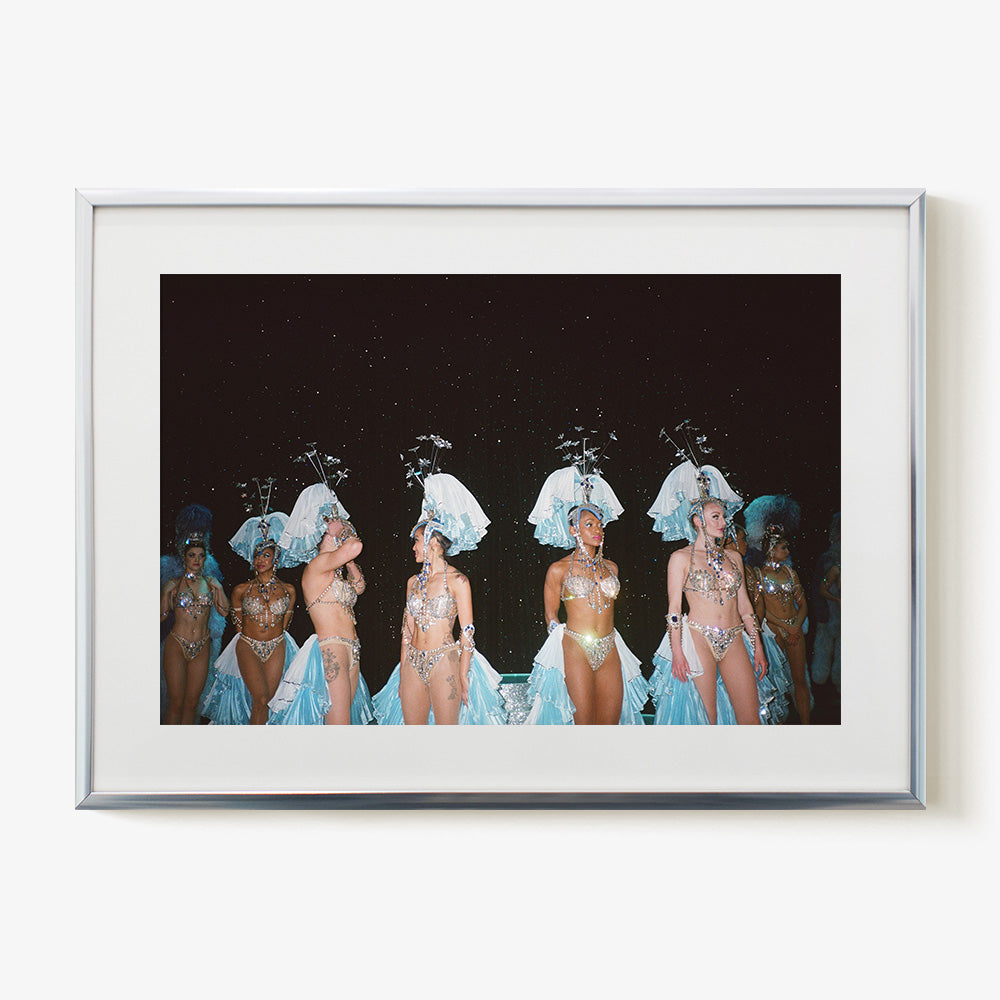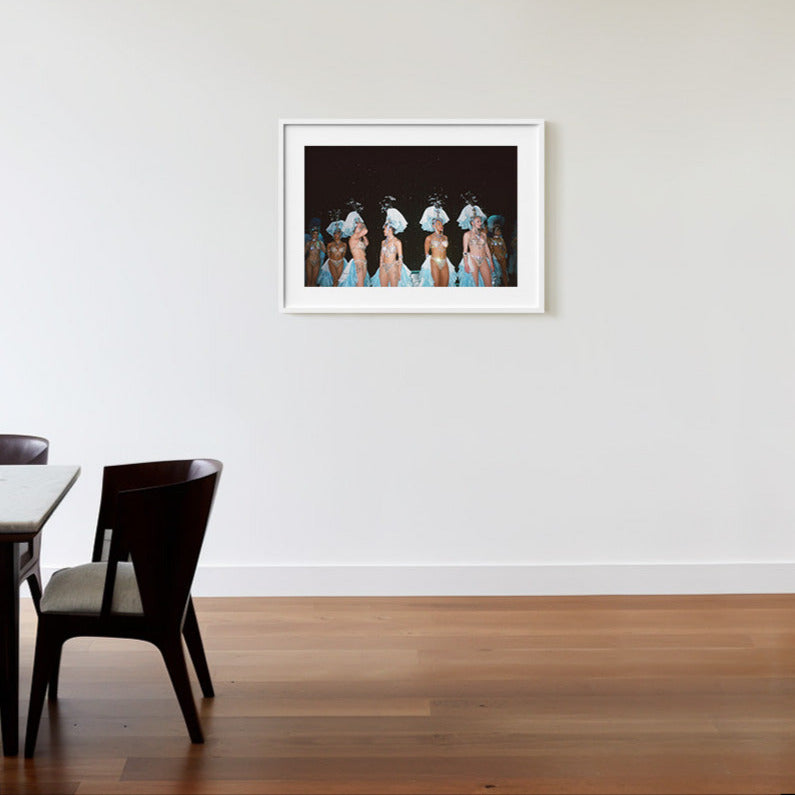Hand-built Archival Framing
Each Tappan frame is custom built out of solid wood, using archival materials. Our framers have years of experience framing and preserving artworks for museums and other cultural institutions.
Learn more about our framing types of frames and matting.
Not sure what looks good? Want a different style of framing?
WebChat or text us at: 310-388-3425
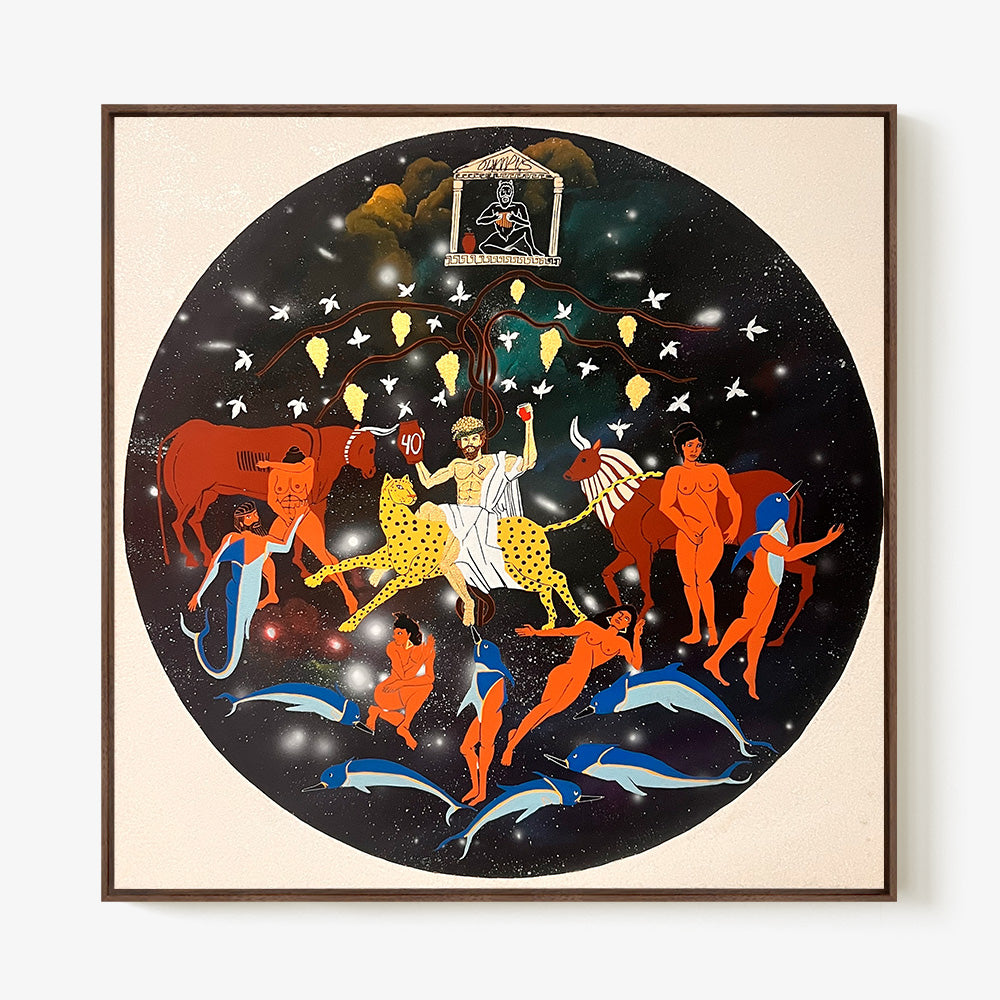
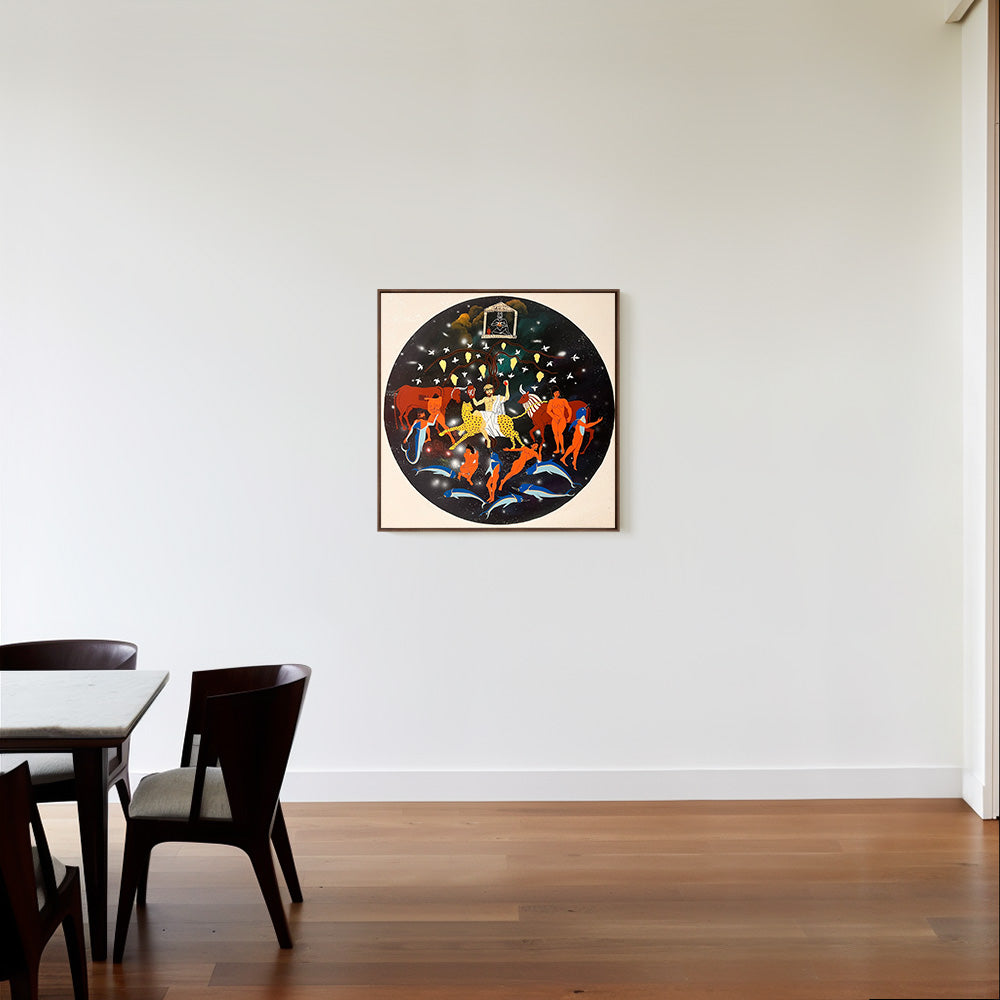
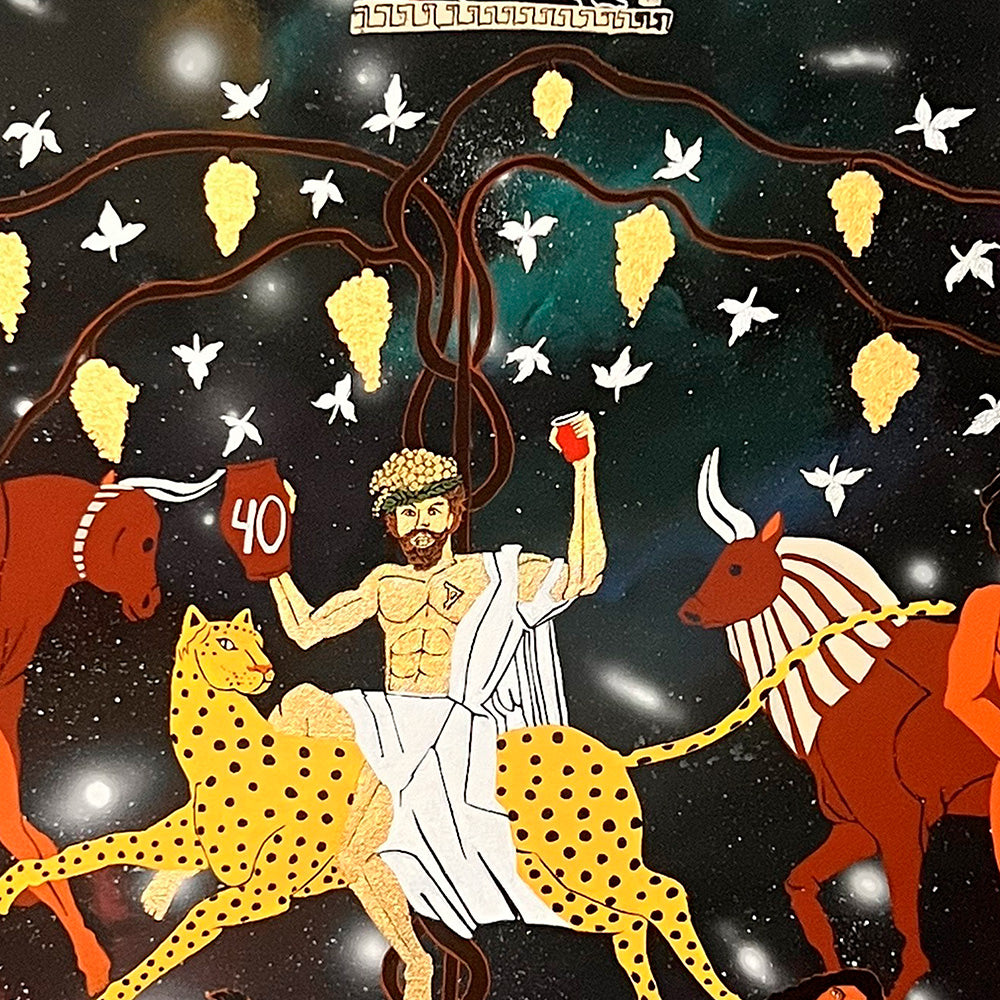
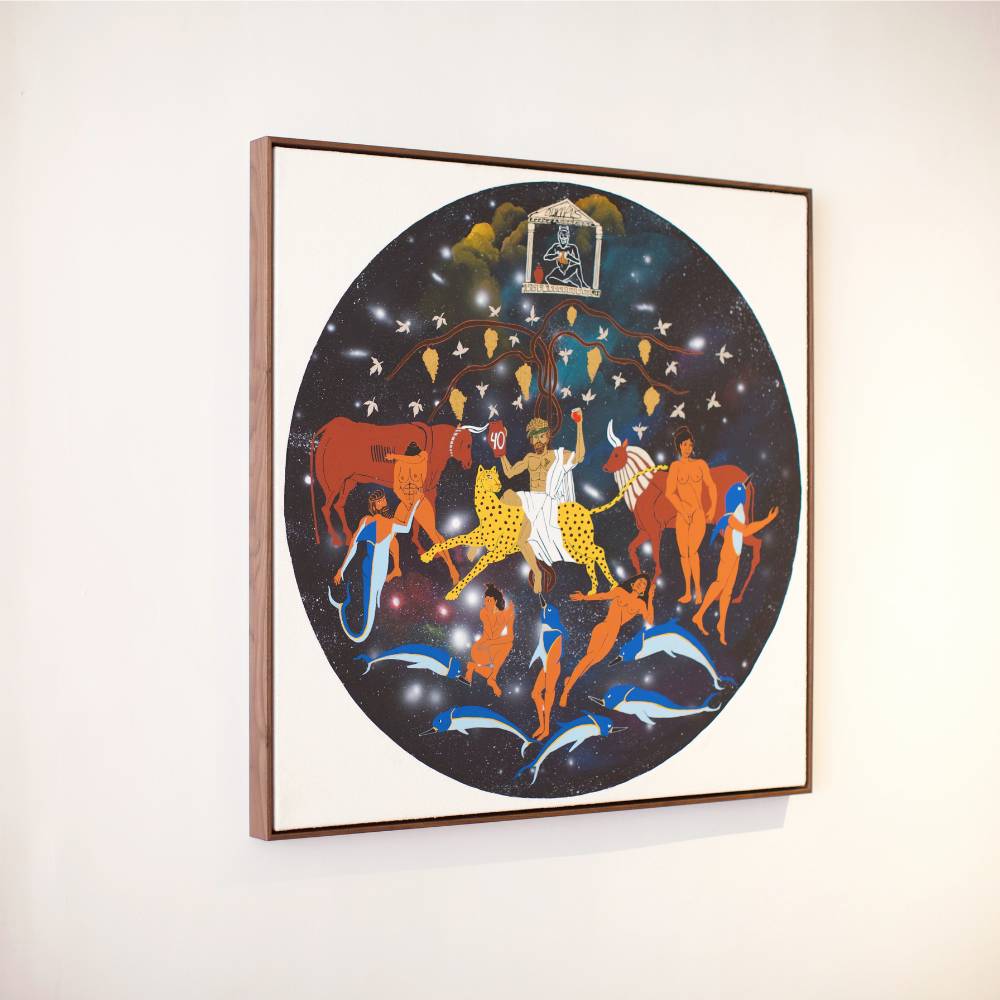
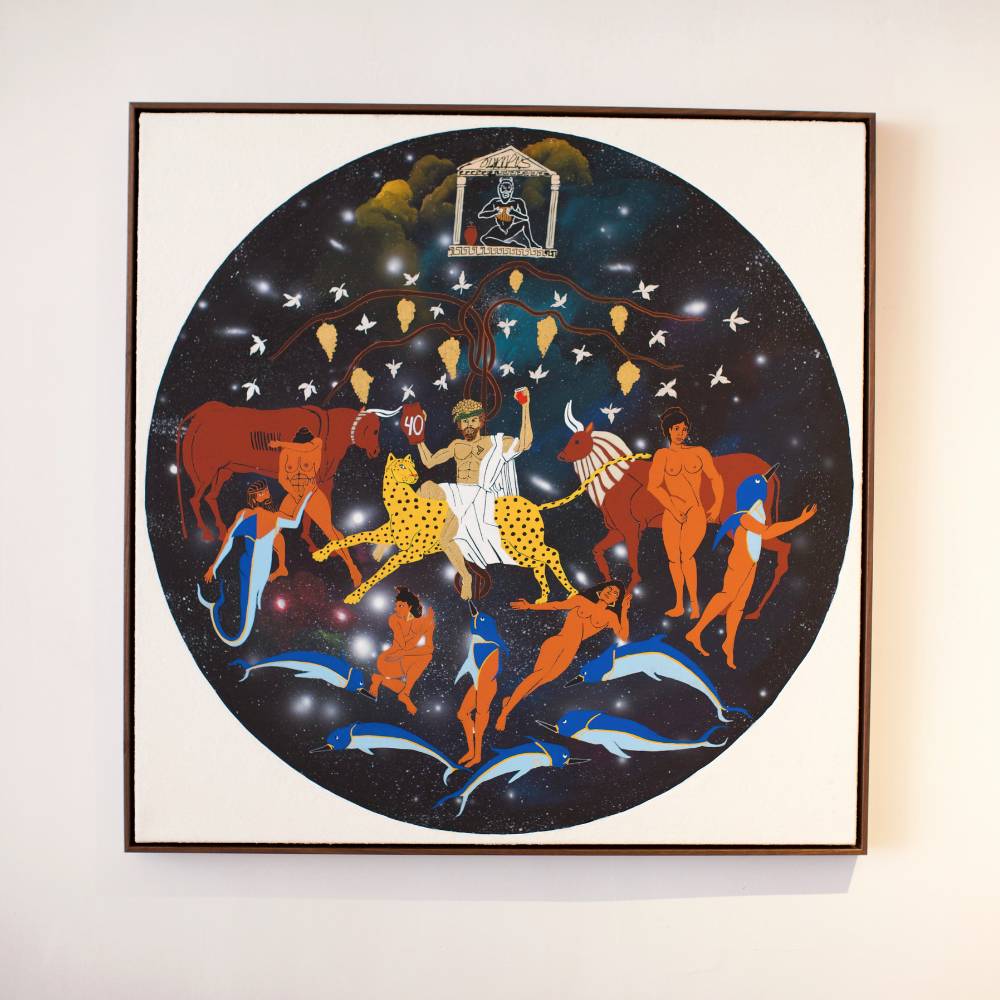
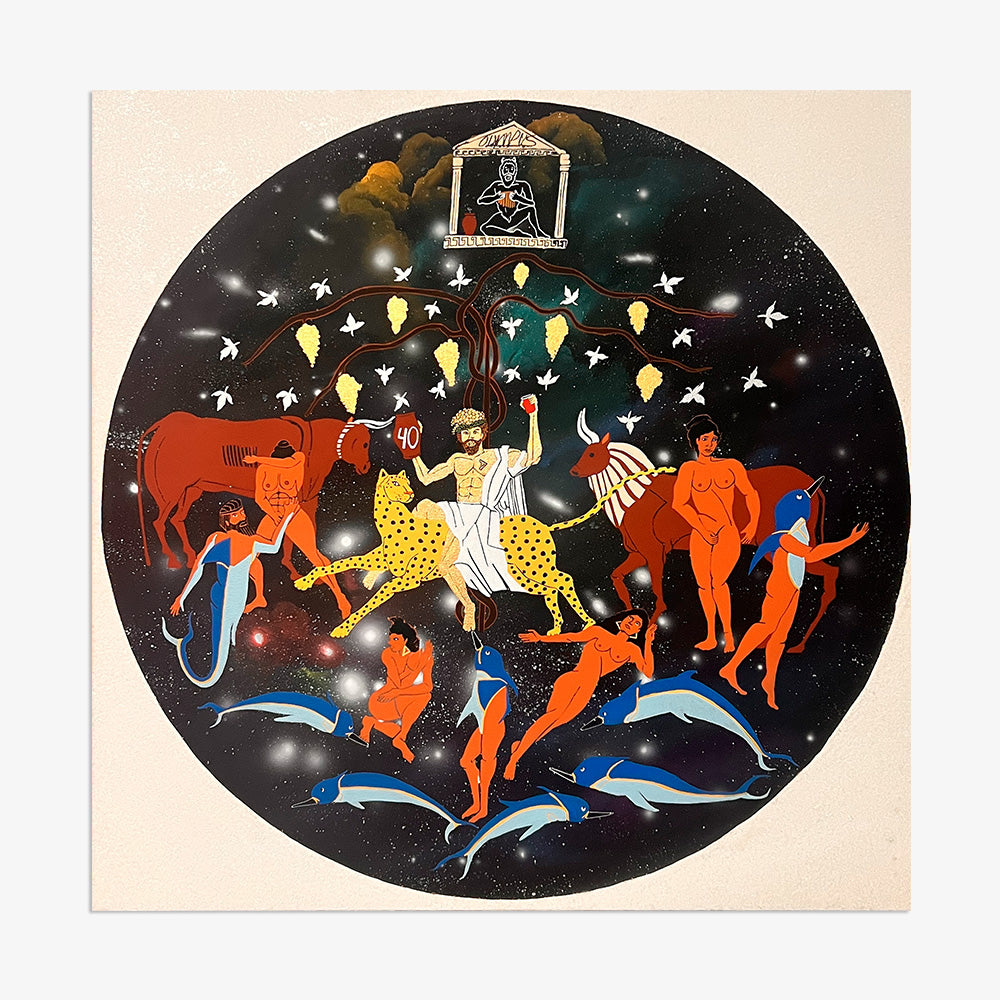
Dionysus, our intrepid enabler
Acrylic on stretched canvas
Umar Rashid continues his signature world-building—collapsing classical mythology, pop culture, and revisionist history into dense, irreverent tableaux that defy linear time. In this work, Rashid turns his focus to decadence, staging a raucous gathering presided over by a triumphant Dionysus. The god of wine and excess commands the scene with such gravitational pull that even Zeus—usually a symbol of divine order—has relinquished his authority, serenading the chaos below with a flute rather than a staff.
Rashid’s subversion extends to the sea: the traditionally female-coded mermaids and sirens are reimagined as dolphin-men, drawn to the revelry above, longing not to become the women they observe, but to join with them. Their desire is mythic, mating, and primal—a force that propels them toward the surface, into a party that collapses time and cosmology. As ever, Rashid blurs the boundaries between epic and absurd, rewriting the terms of power, desire, and myth through a lens that is as historical as it is hallucinatory.
About our custom frames
This service is currently unavailable,
sorry for the inconvenience.
Pair it with a frame
Frame options are for visualization purposes only.
FRAME STYLE
MATTING SIZE
BUILDING YOUR EXPERIENCE
powered by Blankwall
Take a few steps back and let your camera see more of the scene.
powered by Blankwall
Was this experience helpful?
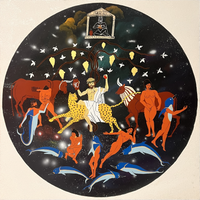
Umar Rashid continues his signature world-building—collapsing classical mythology, pop culture, and revisionist history into dense, irreverent tableaux that defy linear time. In this work, Rashid turns his focus to decadence, staging a raucous gathering presided over by a triumphant Dionysus. The god of wine and excess commands the scene with such gravitational pull that even Zeus—usually a symbol of divine order—has relinquished his authority, serenading the chaos below with a flute rather than a staff.
Rashid’s subversion extends to the sea: the traditionally female-coded mermaids and sirens are reimagined as dolphin-men, drawn to the revelry above, longing not to become the women they observe, but to join with them. Their desire is mythic, mating, and primal—a force that propels them toward the surface, into a party that collapses time and cosmology. As ever, Rashid blurs the boundaries between epic and absurd, rewriting the terms of power, desire, and myth through a lens that is as historical as it is hallucinatory.
Artwork Information
Year
2025
Materials
Acrylic on stretched canvas
Authentication
Signed by Artist
The work comes with a Certification of Authenticity signed by the Co-Founder of Tappan.
Dimensions
ARTWORK DIMENSIONS
36 x 36 inches
FRAMED DIMENSIONS
36 x 36 inches
Floated: 41 x 41 x 2 inches
This artwork is custom-framed in hand-built solid wood framing with archival materials. Custom framed artworks will ship in 1 - 3 weeks.
Custom Orders
We offer a wide variety of custom framing options, please reach out for more information.
Shipping times vary per artwork, text, email, or chat with us to expedite shipping.
text: 310-388-3425
email: [email protected]
Art Advising Services
Complimentary art advising services available on request. More info here
“What's interesting is that history is always written by the victor. There's all these different stories, and as a black person or African-American, as you will or whatever, I haven't figured out how I really fit into this history.”
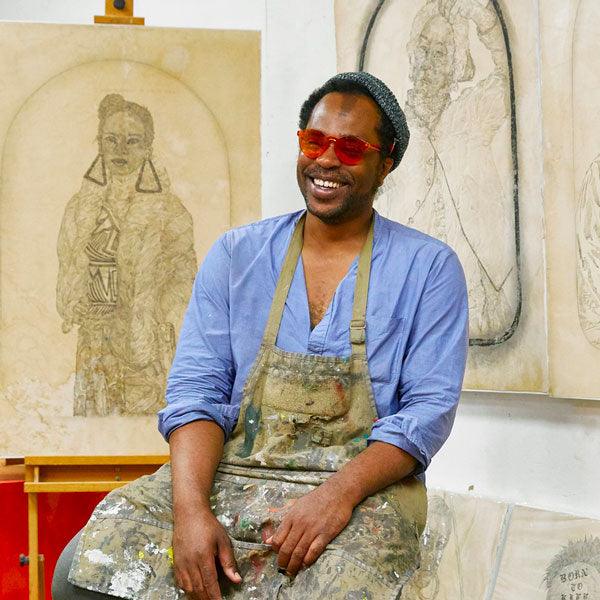
About the Artist
Umar Rashid
Umar Rashid, also known as Frohawk Two Feathers, is a Los Angeles-based multidisciplinary artist renowned for his vivid reimaginings of colonial histories. Through painting, drawing, sculpture, and storytelling, Rashid constructs alternative historical narratives that intertwine fact and fiction, often spotlighting the experiences of marginalized communities omitted from traditional accounts. His work delves into themes of race, power, empire, and resistance, blending influences from hip-hop culture, ancient mythology, and 18th-century colonial aesthetics.
Rashid's art has been featured in prominent exhibitions, including Made in L.A. 2020: a version at both the Hammer Museum and The Huntington Library in Los Angeles. In 2022, he presented his first solo museum exhibition in New York, Ancien Regime Change 4, 5, and 6, at MoMA PS1, showcasing over 30 new works that explore the dynamics of political and cultural power through history and fantasy. In 2024, in collaboration with BLUM he was a part of the PST ART: Art & Science Collide project with his solo exhibition The Kingdom of the Two Californias. La Época del Totalitarismo Part 2.
Select public collections include:
Brooklyn Museum, Hudson River Museum, Nevada Museum of Art, Santa Barbara Museum of Art, Wadsworth Atheneum Museum of Art, Zeitz Museum of Contemporary Art Africa (Cape Town, South Africa), Ruth and Elmer Wellin Museum of Art at Hamilton College, Mount Holyoke College Art Museum, 21C Museum, The Progressive Collection, The Artist Pension Trust

Choose options






This service is currently unavailable,
sorry for the inconvenience.
Pair it with a frame
Frame options are for visualization purposes only.
FRAME STYLE
MATTING SIZE
BUILDING YOUR EXPERIENCE
powered by Blankwall
Take a few steps back and let your camera see more of the scene.
powered by Blankwall
Was this experience helpful?

Umar Rashid continues his signature world-building—collapsing classical mythology, pop culture, and revisionist history into dense, irreverent tableaux that defy linear time. In this work, Rashid turns his focus to decadence, staging a raucous gathering presided over by a triumphant Dionysus. The god of wine and excess commands the scene with such gravitational pull that even Zeus—usually a symbol of divine order—has relinquished his authority, serenading the chaos below with a flute rather than a staff.
Rashid’s subversion extends to the sea: the traditionally female-coded mermaids and sirens are reimagined as dolphin-men, drawn to the revelry above, longing not to become the women they observe, but to join with them. Their desire is mythic, mating, and primal—a force that propels them toward the surface, into a party that collapses time and cosmology. As ever, Rashid blurs the boundaries between epic and absurd, rewriting the terms of power, desire, and myth through a lens that is as historical as it is hallucinatory.



